
Turn your balcony into a flower island
Balconies are an additional outdoor room where you can catch some sun, read a book, enjoy a glass a wine with friends or have a BBQ. All the more important that your balcony looks inviting and comfy. This isn’t as easy as it sounds, especially with small balconies – I speak from experience.
Shady, sunny, large, small – every balcony is unique. Consequently, there’s no sure formula for success when it comes to decorating your balcony. The choice of plants has to match the location of the balcony as well as the time and effort you’re willing to put into maintaining it. Let me tell you: The range of potential balcony plants and flowers is huge and choosing the right ones is not easy, to say the least. That’s why I decided to speak to an expert: Bernhard Schmid, manager of the garden centre Bacher in Langnau has been kind enough to share his tips and tricks with us.
Choose your flower pots wisely
My defined goal is to make my balcony look more lively and inviting. So far, its only purpose has been to store empty cans and bottles and home a tiny table. Oh yes, there are a few plants, too, but they’re not doing too well. My balcony is in the shade most times of the day and it wouldn’t surprise me if I’d chosen flowers that need a lot of direct sunlight. But it’s also possible that I haven’t watered them in a while.
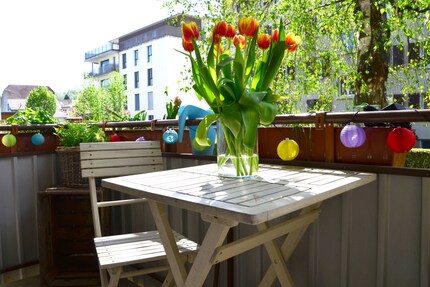
«What’s key,» Bernhard Schmid starts off with, «is to get the right pots. Flowers and plants only truly thrive if they have enough space and soil volume». This is a great tip to start off with; it’s quite possible that I planted too many flowers in one pot. Note to self: Less is more – even with plants.
Choosing the type of planter is entirely up to you; plants aren’t too bothered whether they grow in a window box, a hanging basket or a grow bag. Go for the one that suits and fits the size of your balcony. Mine is tiny, so I like window boxes and hanging planters. But one plant alone doesn’t exactly make for a flower island, so let’s go and get some more plants.
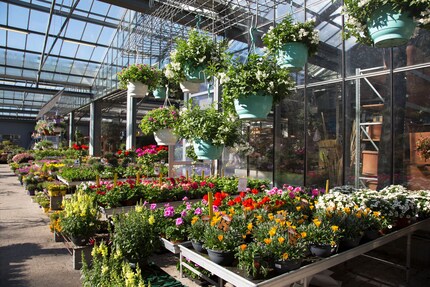
Plants that like the shade
As I mentioned earlier, my balcony is in the shade most of the day. If you’re also in this situation, you might have made the same observations as I have: Many plants don’t like the shade. I’ve had to give up on quite a few plants just because I wasn’t willing to accept that the small markers in the pot were in fact speaking the truth: These plants need direct sunlight. Bernhard Schmid agrees: «If they’re in the wrong location, your plants won’t thrive, no matter how well you look after them.»
So which plants are suitable for my balcony? «Begonias and Fuchsias don't appreciate a lot of bright, hot sunlight and do best in the shade,» Schmid explains. And they are low-maintenance, making them suitable for beginners. Sounds right up my street. I like plants, I really do, and I enjoy looking after them, but I’m by no means a gardening expert. Who knows, this might change when I have a garden of my own.
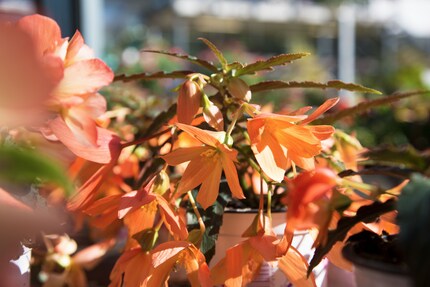
Herbs and vegetables love the sun
If you’re lucky enough to have a sunny balcony, this trend might be for you: According to Schmid, «herbs and vegetables are highly popular with our customers at the moment. It's part of the urban gardening trend.». Urban gardening is the practice of using small, mostly urban areas to cultivate plants and vegetables – growing plants on balconies, in backyards and in raised beds.
«Some of the most popular perennial herbs are rosemary, thyme and sage while basil is one of the most popular annual herbs,» Schmid states. Did you know that there are over ten different types of basil – not just the one type we know? Peppers and tomatoes are also favourites this year. «Peppers are becoming more and more popular, especially because they are available in a huge range from mild to hot varieties,» Schmid adds. When it comes to tomatoes and peppers, he recommends going for the refined varieties, as these are more robust and less prone to diseases.

According to Schmid, the biggest trend of the year are sweet potatoes. However, this Latin-American root vegetable needs a large pot, so it’s not suitable for small balconies. Speaking of root vegetables: Did you know that potatoes are now also available as seedlings? «This makes potatoes suitable for everyone. Before this, growing potato seeds was a lot of work and took time, which is why only ambitious gardeners would grow potatoes,» Schmid explains.
While I start dreaming of recipes I could make with my home-grown vegetables, this dream is shattered once I realise that almost all herbs and vegetables need a lot of sunlight. I'll give the huge building that keeps the sun from my balcony an evil stare when I get back home.
If you’d rather have flowers than vegetables on your balcony, Dipladenias seem to be the ones to go for. At least, they seem to be Bernhard Schmid’s favourites: Whatever I ask for – low-maintenance, colourful, long-lasting flowers – I get the same answer: Dipladenias. Sure, they’re beautiful, but I would have liked to see a bit of variety on my balcony. At the end of our conversation, he finally reveals I do have another option: «Busy Lizzies add a lovely touch of colour to your balcony, but make sure to water them generously or they will start to droop.»
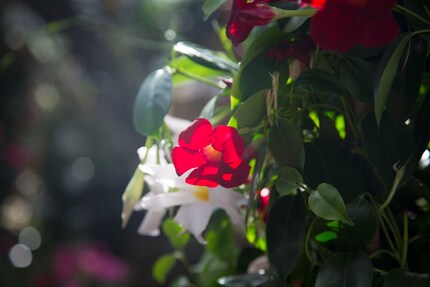
Classic rookie mistakes
My last question is what beginners usually get wrong – I’m hoping for a surprising answer. I don’t get one: «Not giving plants enough water is and remains the classic mistake.». There it is, we simply forget to water our plants regularly. «If it rains, we usually assume that our plants catch enough rain water and forget that most balcony plants are sheltered,» the expert explains. Another common mistake is to plant flowers too early and l leave them out in the cold. «Most flowers can be planted now already, but have to be covered with a fleece in case of frost. Basil and tomatoes are more sensitive; if the temperatures drop below zero, you need to take them inside.»
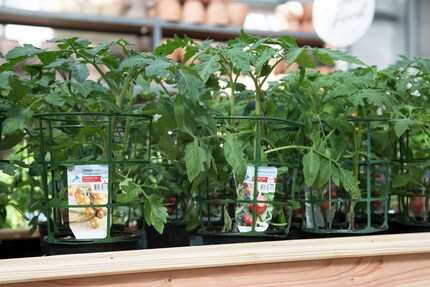
Once I’ve asked all my questions, I meander through the garden centre for a while. I’ve definitely learned a few lessons: I’ll never be self-sufficient with my current balcony, planter size and soil volume are crucial and Begonias are my first choice. But above all, I’ve learned that tiny and shady will always be tiny and shady – even the best gardener in the world can’t change that.
I’m off to check out the online property market.
My life in a nutshell? On a quest to broaden my horizon. I love discovering and learning new skills and I see a chance to experience something new in everything – be it travelling, reading, cooking, movies or DIY.
Practical solutions for everyday problems with technology, household hacks and much more.
Show all